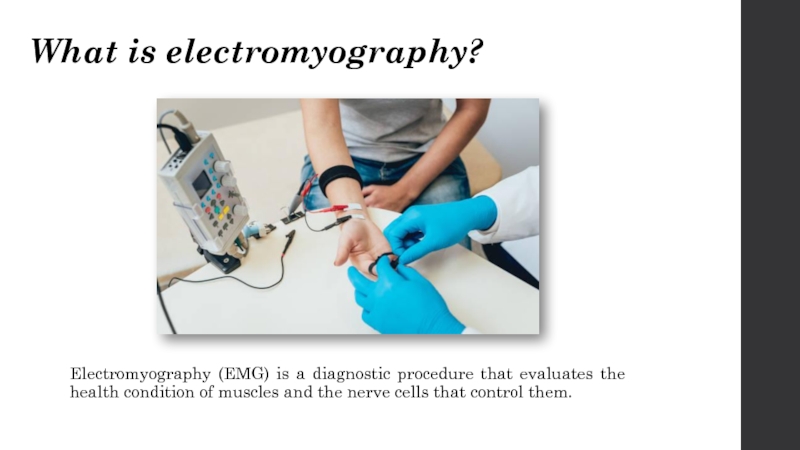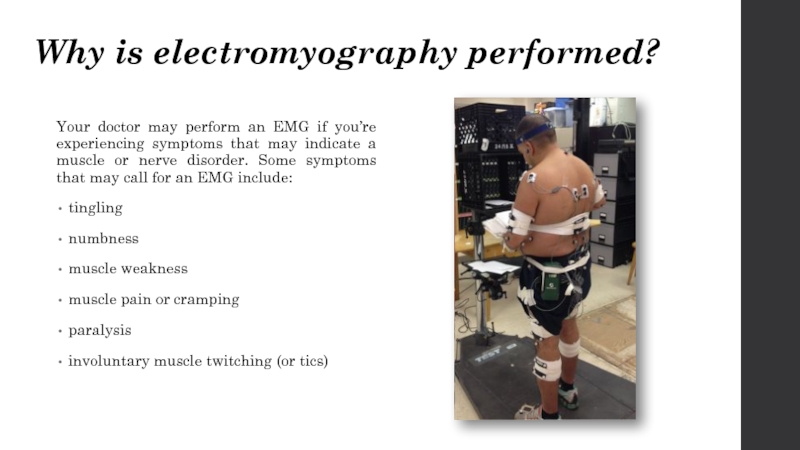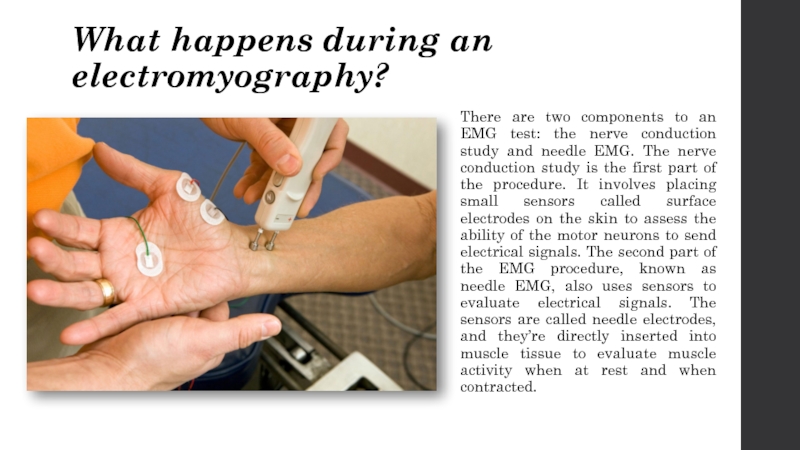- Главная
- Разное
- Дизайн
- Бизнес и предпринимательство
- Аналитика
- Образование
- Развлечения
- Красота и здоровье
- Финансы
- Государство
- Путешествия
- Спорт
- Недвижимость
- Армия
- Графика
- Культурология
- Еда и кулинария
- Лингвистика
- Английский язык
- Астрономия
- Алгебра
- Биология
- География
- Детские презентации
- Информатика
- История
- Литература
- Маркетинг
- Математика
- Медицина
- Менеджмент
- Музыка
- МХК
- Немецкий язык
- ОБЖ
- Обществознание
- Окружающий мир
- Педагогика
- Русский язык
- Технология
- Физика
- Философия
- Химия
- Шаблоны, картинки для презентаций
- Экология
- Экономика
- Юриспруденция
Electromyography презентация
Содержание
Слайд 2What is electromyography?
Electromyography (EMG) is a diagnostic procedure that evaluates the
health condition of muscles and the nerve cells that control them.
Слайд 3Why is electromyography performed?
Your doctor may perform an EMG if you’re
experiencing symptoms that may indicate a muscle or nerve disorder. Some symptoms that may call for an EMG include:
tingling
numbness
muscle weakness
muscle pain or cramping
paralysis
involuntary muscle twitching (or tics)
tingling
numbness
muscle weakness
muscle pain or cramping
paralysis
involuntary muscle twitching (or tics)
Слайд 4What happens during an electromyography?
There are two components to an EMG
test: the nerve conduction study and needle EMG. The nerve conduction study is the first part of the procedure. It involves placing small sensors called surface electrodes on the skin to assess the ability of the motor neurons to send electrical signals. The second part of the EMG procedure, known as needle EMG, also uses sensors to evaluate electrical signals. The sensors are called needle electrodes, and they’re directly inserted into muscle tissue to evaluate muscle activity when at rest and when contracted.
Слайд 5What do my electromyography results mean?
If your EMG shows any electrical
activity in a resting muscle, then you may have:
a muscle disorder
a disorder affecting the nerves that connect to the muscle
inflammation caused by an injury
If your EMG shows abnormal electrical activity when a muscle contracts, then you may have a herniated disc or a nerve disorder, such as ALS or carpal tunnel syndrome.
Depending on your results, your doctor will talk to you about any additional tests or treatments that might be needed.
a muscle disorder
a disorder affecting the nerves that connect to the muscle
inflammation caused by an injury
If your EMG shows abnormal electrical activity when a muscle contracts, then you may have a herniated disc or a nerve disorder, such as ALS or carpal tunnel syndrome.
Depending on your results, your doctor will talk to you about any additional tests or treatments that might be needed.











